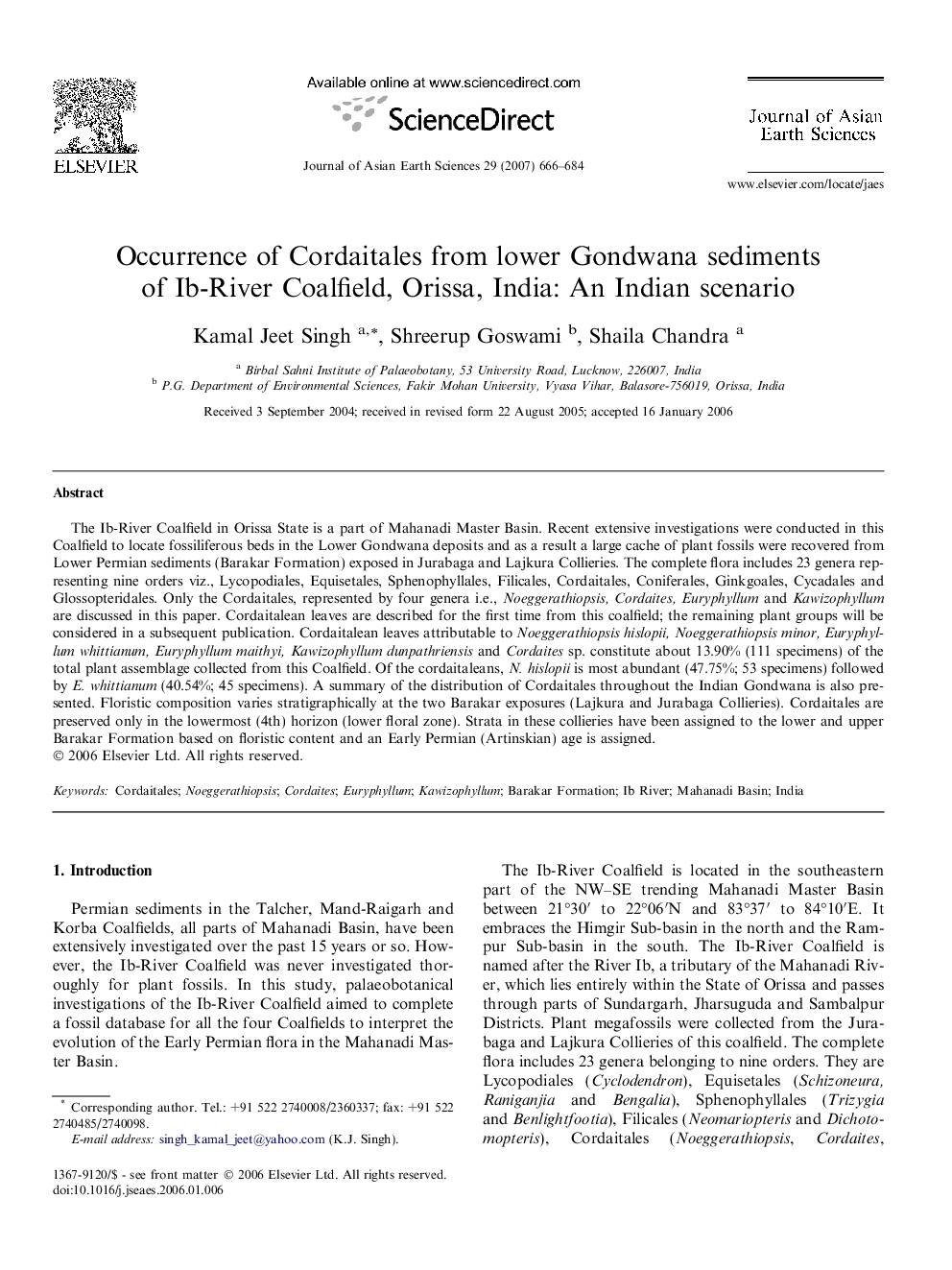| Article ID | Journal | Published Year | Pages | File Type |
|---|---|---|---|---|
| 4732573 | Journal of Asian Earth Sciences | 2007 | 19 Pages |
The Ib-River Coalfield in Orissa State is a part of Mahanadi Master Basin. Recent extensive investigations were conducted in this Coalfield to locate fossiliferous beds in the Lower Gondwana deposits and as a result a large cache of plant fossils were recovered from Lower Permian sediments (Barakar Formation) exposed in Jurabaga and Lajkura Collieries. The complete flora includes 23 genera representing nine orders viz., Lycopodiales, Equisetales, Sphenophyllales, Filicales, Cordaitales, Coniferales, Ginkgoales, Cycadales and Glossopteridales. Only the Cordaitales, represented by four genera i.e., Noeggerathiopsis, Cordaites, Euryphyllum and Kawizophyllum are discussed in this paper. Cordaitalean leaves are described for the first time from this coalfield; the remaining plant groups will be considered in a subsequent publication. Cordaitalean leaves attributable to Noeggerathiopsis hislopii, Noeggerathiopsis minor, Euryphyllum whittianum, Euryphyllum maithyi, Kawizophyllum dunpathriensis and Cordaites sp. constitute about 13.90% (111 specimens) of the total plant assemblage collected from this Coalfield. Of the cordaitaleans, N. hislopii is most abundant (47.75%; 53 specimens) followed by E. whittianum (40.54%; 45 specimens). A summary of the distribution of Cordaitales throughout the Indian Gondwana is also presented. Floristic composition varies stratigraphically at the two Barakar exposures (Lajkura and Jurabaga Collieries). Cordaitales are preserved only in the lowermost (4th) horizon (lower floral zone). Strata in these collieries have been assigned to the lower and upper Barakar Formation based on floristic content and an Early Permian (Artinskian) age is assigned.
